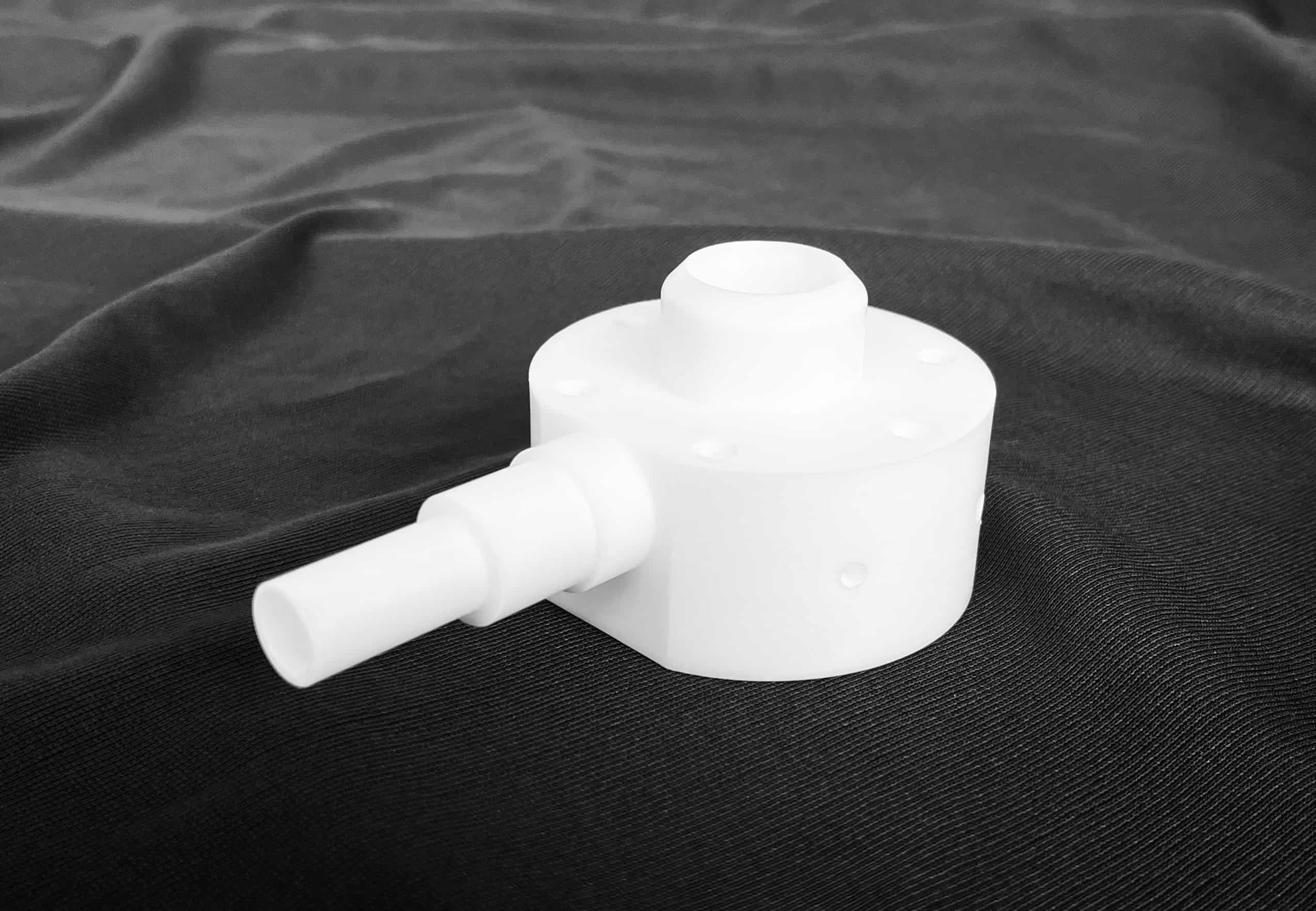For the most part, injection moulding is seen as a well traversed process. It is a widely used manufacturing process that allows for the mass production of complex plastic parts with excellent dimensional accuracy and mechanical properties. Unlike machined components, injection moulded parts can be easily produced, with a single part taking only about a minute to make, where the same part may have required anywhere from a few minutes to a few hours to machine, depending on complexity. The downside for injection moulding is that the up-front costs are far higher. An injection moulding die might cost anywhere from a few thousand dollars to many tens of thousands, again depending on how complex the part is or how many cavities are needed. The trade-off is therefore made along the lines of cycle-time and consumption per part (both which tend to be lower with moulding), set against the mould cost, which needs to be amortized over a high volume of parts to offset the increase in the per part rate as against machining.
However, even if moulding is a viable option, there exist limitations depending on the type of polymer we are looking at. Regular injection moulding polymers would include polypropylene, poly-ethylenes (HDPE and LDPE), nylons, and polyacetal. Each of these has been extensively worked with such that any experienced moulder would know the methods of working with them. However, once we move into the realm of high-performance polymers, the matter becomes more complex.
Before we go further, let us look at the polymers in question.
PEEK (Polyether Ether Ketone)
PEEK is a high-performance, semi-crystalline thermoplastic known for its excellent combination of mechanical properties, chemical resistance, and thermal stability. PEEK components offer exceptional strength, stiffness, and dimensional stability even at elevated temperatures. Its resistance to chemicals, including harsh acids and bases, makes it suitable for applications in the chemical processing, oil and gas, and medical industries. PEEK's inherent biocompatibility also makes it a valuable material in medical implants and devices.
PPS (Polyphenylene Sulfide aka Ryton)
PPS is a semi-crystalline, high-temperature thermoplastic renowned for its excellent chemical resistance, dimensional stability, and flame retardancy. PPS parts exhibit superior resistance to a wide range of chemicals, including solvents, fuels, and acids. Its low moisture absorption, excellent electrical properties, and high thermal resistance make it an ideal choice for electrical and electronic components, automotive parts, and industrial applications.
PVDF (Polyvinylidene Fluoride and Kynar)
PVDF is a highly versatile thermoplastic known for its excellent chemical resistance, UV stability, and fire retardancy. PVDF components exhibit exceptional resistance to harsh chemicals, such as acids, solvents, and chlorinated compounds, making it suitable for applications in the chemical processing, semiconductor, and electrical industries. Its inherent UV stability and flame-retardant properties also make it a popular choice for outdoor applications and fire-safe products.
PEI (Polyetherimide aka Ultem)
PEI is an amorphous, high-temperature thermoplastic that offers outstanding dimensional stability, excellent electrical properties, and inherent flame retardancy. PEI parts exhibit remarkable mechanical strength, stiffness, and resistance to creep, even at elevated temperatures. PEI's excellent electrical insulation properties make it suitable for electrical connectors, switches, and semiconductor components. It is also commonly used in aerospace, automotive, and healthcare applications due to its flame-retardant nature and biocompatibility.
Polyimide (PI aka Kapton)
Polyimide is a high-performance, semi-crystalline thermoplastic renowned for its exceptional thermal stability, excellent electrical insulation properties, and resistance to wear and chemicals. Polyimide components offer exceptional dimensional stability, high strength, and excellent resistance to creep, making them ideal for demanding applications in the aerospace, automotive, and electronics industries. Polyimide's ability to withstand extreme temperatures and harsh environments has made it a material of choice in applications such as insulation, aerospace composites, and high-temperature electronics.
PAI (Polyamide-Imide aka Trolon)
PAI is a high-performance thermoplastic known for its exceptional mechanical properties, high temperature resistance, and excellent chemical resistance. PAI parts exhibit exceptional dimensional stability, high strength, and excellent resistance to wear and creep, even at elevated temperatures. Its inherent flame retardancy, low outgassing properties, and resistance to a wide range of chemicals make it suitable for aerospace, automotive, and industrial applications.
The superior properties of these polymers make them vital in several industries. However, there are drawbacks to moulding these polymers. For one, high-performance polymers tend to be far more expensive than regular polymers, often in the range of 20-50X the price. This makes moulding a challenge, as a new mould usually requires some trial and error before it is production ready. The second issue is that these polymers only melt at elevated temperatures, usually in excess of 300°C. Adding to the complexity is that when in a molten state, these polymers will give of effluents that can be highly corrosive to regular injection moulding equipment. As a result, the entire injection moulding machine and the mould itself need to be made of higher-grade metals and have high-temperature heating elements to ensure that the equipment can handle the process.
Because of these challenges, there exist very few moulders that will take on parts in these polymers. However, as the demand for these polymers increases, so too will the demand for processors that have focused their efforts on developing these plastics.
In 2023, Poly Fluoro embarked on a venture to develop an injection moulding machine tailored to moulding high-performance plastics. The addition of this equipment will make Poly Fluoro one of the very few polymer companies world-wide that can take on high-volume injection moulded parts in these high-performance polymers. We look forward to yet again being pioneers in our field and moving to areas that others would otherwise hesitate to go.




